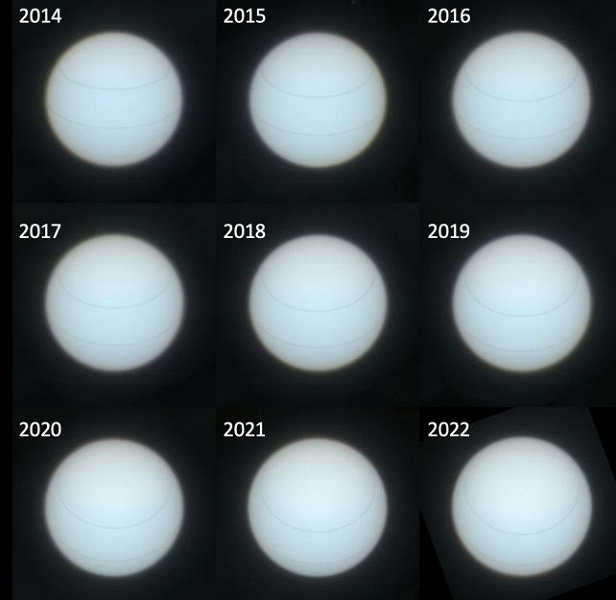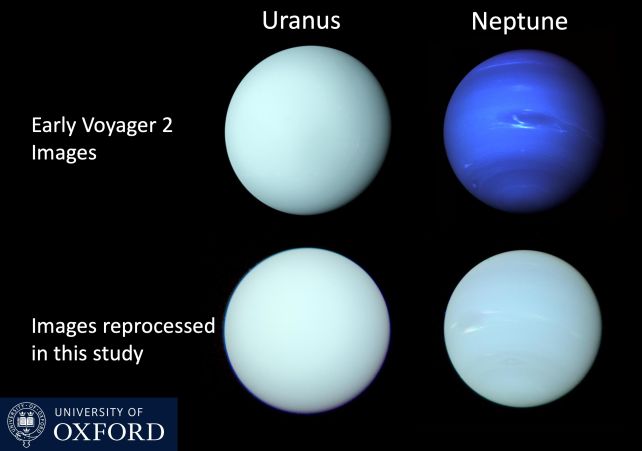Scientists have corrected the Voyager 2 data and revealed the secret of the difference between the colors of Uranus and Neptune
For decades, scientists have been interested in the differences in the colors of Uranus and Neptune, which, despite similar parameters and atmospheric composition, had noticeable differences. According to data from Voyager 2, Uranus has an aquamarine hue, while Neptune appears darker and bluer. This contradiction caused confusion and bewilderment among scientists, since it was not clear why these two planets, which have so many common characteristics and whose atmospheric composition is almost identical, were so different in color.
New research allowed scientists to correct the data and come to new conclusions. It turned out that Voyager 2's images of Neptune had been artificially enhanced and altered to enhance its contrast and make its color appear bluer than it actually is. This was known to planetary scientists earlier, and they warned about it in their publications, but over time this information was lost.
«Photographs of Neptune taken by “Voyager 2” were artificially enhanced and altered so they looked too blue. The fact that the color was artificially saturated was known to planetary scientists at the time, and the images were published with explanations, but this information was, as it were, erased over time. By applying our model to the original data, we were able to restore more realistic colors of both Neptune and Uranus», — explains physicist Patrick Irwin of Oxford University.
It turns out that scientists have long known that the images of «Voyager 2» do not accurately reflect the colors of Uranus and Neptune, but until now it was unclear what they really were.
To obtain more accurate information about the colors of Neptune and Uranus, Irwin and his team used two powerful scientific instruments — Spectrograph (STIS) of the Hubble Telescope and Multi Unit Spectroscopic Explorer of the Very Large Telescope. They analyzed the data and used it to reprocess both Voyager 2 images and Hubble's Wide Field Camera 3 images of Neptune.
New processed images have revealed that Neptune is actually lighter than expected, and its color is closer to that of Uranus. The main difference is that Neptune has a slightly more bluish tint due to its thin atmosphere. This explains the previous perception of Neptune as a darker, bluer planet.

Additional research also answered another mystery — why Uranus changes color during its year (which is equal to 84 Earth years). During the solstice, when one of the poles faces the Sun, the planet appears a little greener. During the equinox, when the equator faces the Sun, Uranus appears a little bluer. This is due to the unusual orientation of Uranus. It is tilted so that its axis of rotation is perpendicular to the orbital plane of the Solar System. There is much less methane at the planet's poles than at the equator, which changes the way Uranus reflects sunlight in these regions because methane absorbs red wavelengths. Additional modeling revealed a haze of methane ice that thickens as the planet moves from the equinox to the solstice, increasing reflectivity. This is what gives the planet its changing hue.
«The misperception of Neptune's colors, as well as the unusual colors of Uranus, have puzzled us for decades, — says astronomer Heidi Hummel of the Association for Scientific Research in Astronomy (who was not involved in the study). — This research should finally put an end to both problems».

